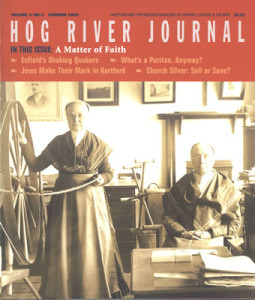(c) Connecticut Explored Inc. Summer 2005
Subscribe/Buy the Issue!
Thousands of miles from home, on the “Big Island” of Hawaii, I stood half-listening to the patter of the Lyman House Memorial Museum tour guide, absorbed by my surroundings. I snapped to attention, though, as he said, “… built by the Lymans of New England.”
“Lyman,” I thought. “Surely that’s a Connecticut name.” Sure enough, the house had been built by Reverend David Belden Lyman, born in New Hartford in 1803. At age 29, Lyman had married 27-year-old Sarah Joiner from Royalton, Vermont, a woman he barely knew but whom he expected to join in his missionary work. Joiner recorded her doubts in her diary: “Reasons why I should not engage in this great and glorious warfare. In the first place I have not been so decidedly pious as I ought, my influence has not been exerted in favour of religion, and if I neglect to improve upon the opportunities of doing good among my kindred and acquaintances, surely I am not a fit person to go on a mission.”
We know she overcame her doubts, for she married the young reverend, boarded a ship for the “Sandwich Islands,” and lived among the Hawaiians until her death at age 80. Her diary doesn’t reveal why she took this “leap of faith” to marry and move thousands of miles trom home. I can only marvel at her bravery—she never did return to New England.
Of course, Rev. and Mrs. Lyman and their fellow Congregationalists did not have a monopoly on the “great and glorious warfare” of “doing good,” so we needn’t travel as far as Hawaii to find stories of Connecticans whose religious beliefs have left a lasting legacy. In this issue, HRJ explores the ways in which religion and communities of faith have shaped the Greater Hartford region. One important thread of this story began in the mid-1800s as the Industrial Revolution brought the first great waves of immigrants to America, thereby upsetting the Yankee applecart. Irish and, later, Italian immigrants arrived en masse in Hartford, bringing Catholicism with them. They received a cool response, but undaunted, worked hard to establish themselves.
Through a Protestant intermediary, Hartford’s Bishop McFarland purchased the old Morgan homestead on Asylum Hill. In 1872, the newly organized parish built a grand cathedral right smack in the middle of the mansions of Hartford’s Protestant elite. With this location, Trinity College Visiting Assistant Professor of Religion Andrew Walsh notes, Bishop McFarland “wanted to make a decisive political and social statement: whether the Yankees liked it or not, they now had to deal with the rising strength of Catholics, and particularly Irish Catholic immigrants.
Hartford’s Jewish community followed a different course, in part because their numbers were initially small and their religious activities somewhat restricted by law. While Jews had been in Hartford since Colonial days, in 1843, they finally won the right to own property for religious purposes. In 1876, the Beth Israel congregation bullt Connecticut’s first synagogue, on Charter Oak Avenue. Now home to the Charter Oak Cultural Center, that building is one of this issue’s Destinations. (See page 38.)
Meanwhile, tired of being seated in the galleries, Harttord’s free Blacks formed their own congregation in 1819 and built a church on the East side’s Talcott Street in 1826. Two descendant churches of that fledgling congregation continue today in Hartford: the Faith Congregational Church, featured on p. 34, and the Metropolitan A.M.E. Zion Church. I invite you to read on to learn about these and other communities of faith’s contributions to the Hartford region.
Theirs are stories of courage and perseverance. While I was surprised to encounter the influence of a 19th century Connecticut missionary in Hawaii, consider that half a world away, people of other faiths were staking their claims in Connecticut, doing God’s work in their own ways. In the process, they made their own indelible marks.
Explore!
Read all of the stories in the Summer 2005 issue
Site Lines: The Black Church in Connecticut “Fortresses of Faith, Agents of Change”

